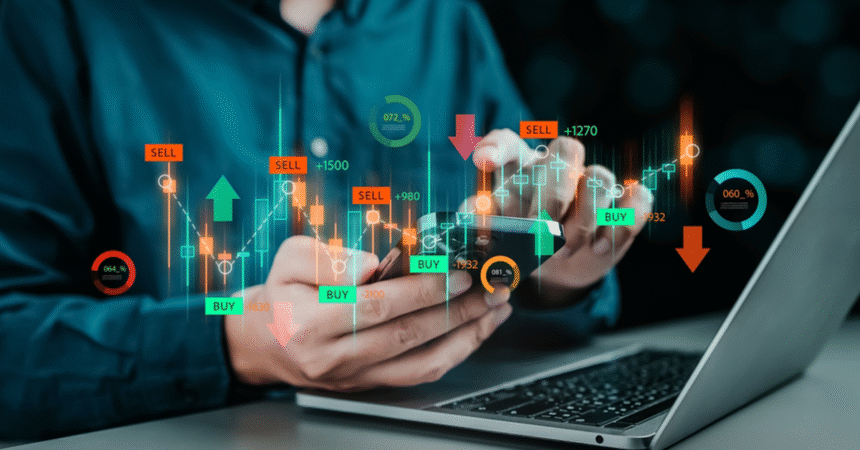S&P futures are two of the most followed and actively traded financial products in the world. They are a fundamental part of futures trading, offering investors and speculators tools to bet on or hedge against action in the U.S. stock market.
This article discusses the mechanism of S&P futures, their function in futures trading, and how they may be used to benefit both retail and institutional market players.
What are S&P Futures?
S&P futures are standard contracts which allow a bargain to purchase and sell the S&P 500 Index at a future date and at a price. S&P futures can be purchased and sold on the futures market, which includes those on the Chicago Mercantile Exchange (CME), and are settled using cash, however, without physical transfer of assets. Instead, the gains or losses are realized in relation to variations in value during the moment the contract is opened and when it closes.
S&P 500 Index S&P 500 Index can be described as a measurement that measures the overall performance of the 500 most listed companies that are publicly traded across the U.S. S&P futures are therefore an opportunity to invest in or trade the general trend that is the U.S. equity market without the need to buy individual stocks.
E-mini and Micro E-mini S&P Futures
There are various sizes of contracts for S&P futures that are traded, with the most popular one being called an E-mini S&P 500 futures (symbol ES). The E-mini contract amounts to 50 times the value of the S&P 500 Index. If we assume that the index is 4, the value of the contract is $200,000.
To accommodate smaller positions or a more precise size of the position for more precise position sizing, the CME also provides micro E-mini S&P futures (symbol ME), 10 times larger than the smaller E-mini. The contracts give you access to the S&P 500; however, they have much lower capital requirements.
The Role of Futures Trading
Futures trading is, in essence, the act of buying a future contract or trading it with the expectation that prices will rise. The speculators can be long when they expect the underlying index to increase or short if they believe it will drop.
The speculators who want to make money from price movements and hedgers looking to eliminate risk in their portfolios of investments can benefit from the futures market to trade.
For S&P, the futures market, buyers are able to utilize these contracts to gain exposure to the entire market as well as to protect their equity investments or to implement complicated strategies such as spread arbitrage, trading or duplicate portfolios.
Benefits of S&P Futures Trading
Here are a few of the advantages of using S&P futures as part of the course of a strategy for investment or trading:
1. Liquidity
S&P futures are among the best-liquid S&P futures contracts in the world. They have huge trading volumes and small bid-ask spreads. This makes it easy to access and exit. This is crucial to both day traders and institutional investors.
2. Leverage
Futures contracts leverage in their very nature, which means that the trader is able to use the value of a huge contract in order to make trades against a tiny margin deposit. While this may increase potential returns but it also raises risk, so an effective risk management strategy becomes crucial.
3. Access to the Whole Market
Through investing in S&P futures, investors have access to the whole S&P 500 Index, which is a broad sample of the U.S. economy. This makes them an excellent option for macroeconomic speculation or diversification of portfolios.
4. Around-the-Clock Trading
Contrary to the traditional market for stocks, which is operated during the duration of a fixed time, S&P futures are traded around the clock. This lets traders react to global news and events that occur outside normal trading hours.
5. Cost Effectiveness
Due to their leverage and costs, S&P futures are cheaper than buying an index of stocks, and even trading ETFs that are based on indexes. (ETFs).
Risks of S&P Futures Trading
While they are a great investment, S&P futures trading is not without dangers:
1. Volatility of the Market
The market for stocks can shift quickly with the announcement of information on economics, geopolitical developments, as well as corporate announcements. This could result in huge profits, and also huge losses, too, if the direction that the market follows is not in accordance with a trader’s opinion.
2. Leverage Risk
Although leverage can be a means to increase profits, it also increases the risk of losing. There is a greater chance of losing money than what was put in the margin in the event that position handling is not done correctly.
3. Complexity
Speculation in the futures market requires a thorough understanding of financial markets, the contract terms and the dealing terminals. Beginning traders need to undergo a thorough self-education before dealing with hard money.
4. Margin Calls
If a trader’s position is strongly shifted against an investor, they may be notified of a margin violation and be required to pay more money to secure the position. In the absence of this, it could cause forced liquidation.
Hedging using S&P Futures
One of the most effective applications of S&P futures offered by traders who trade in futures is for hedging. Portfolio managers, institutional investors and even retail traders use these contracts to hedge against the possibility of losses on equity positions.
For instance, an investor who is concerned about the market’s weakness in the near future could be able to short S&P futures to maintain the value of his long-term stock portfolio intact. This option allows investors to mitigate risk from a downward perspective without having to sell individual securities.
Who Trades S&P Futures?
S&P futures are utilized by various participants in the market:
- Institutional investors use them to manage hedges and asset allocation.
- The direction of the market in the short term can be carried out by hedge funds employing strategies that are speculative.
- Retail traders utilize E-mini or Micro E-mini contracts regularly for day trading, swing trading, or trading.
- Arbitrageurs use the difference in prices between futures contracts and the corresponding indexes or ETFs.
Conclusion
S&P futures are the mainstay of the futures trading market, offering the convenience and effectiveness for those looking to hedge or trade against price fluctuations on the U.S. equity market. With strong liquidity, position sizes that are easily controlled through E-mini and Micro E-mini contracts, and around-the-clock trading, they are a powerful platform for trading strategies.
FundingTicks stands out as one of the best futures trading platforms, designed for traders who demand speed, reliability, and precision. With advanced charting tools, real-time market data, and lightning-fast execution, FundingTicks empowers both beginner and professional traders to make smarter trading decisions.
Related News:
Figma IPO Stocks Soar, Exposing Wall Street’s Tech Stock Blind Spots














